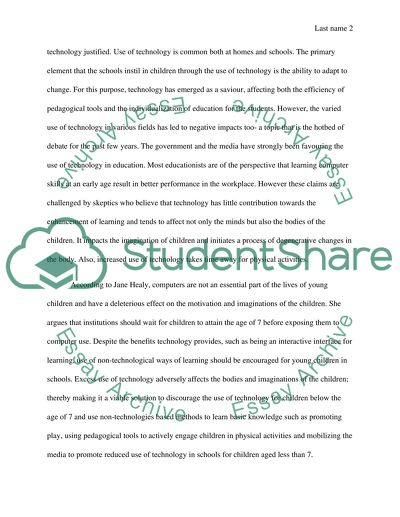Cite this document
(“Children and Technology Research Paper Example | Topics and Well Written Essays - 2250 words”, n.d.)
Retrieved from https://studentshare.org/family-consumer-science/1417267-we-should-not-expose-our-children-to-the
Retrieved from https://studentshare.org/family-consumer-science/1417267-we-should-not-expose-our-children-to-the
(Children and Technology Research Paper Example | Topics and Well Written Essays - 2250 Words)
https://studentshare.org/family-consumer-science/1417267-we-should-not-expose-our-children-to-the.
https://studentshare.org/family-consumer-science/1417267-we-should-not-expose-our-children-to-the.
“Children and Technology Research Paper Example | Topics and Well Written Essays - 2250 Words”, n.d. https://studentshare.org/family-consumer-science/1417267-we-should-not-expose-our-children-to-the.


